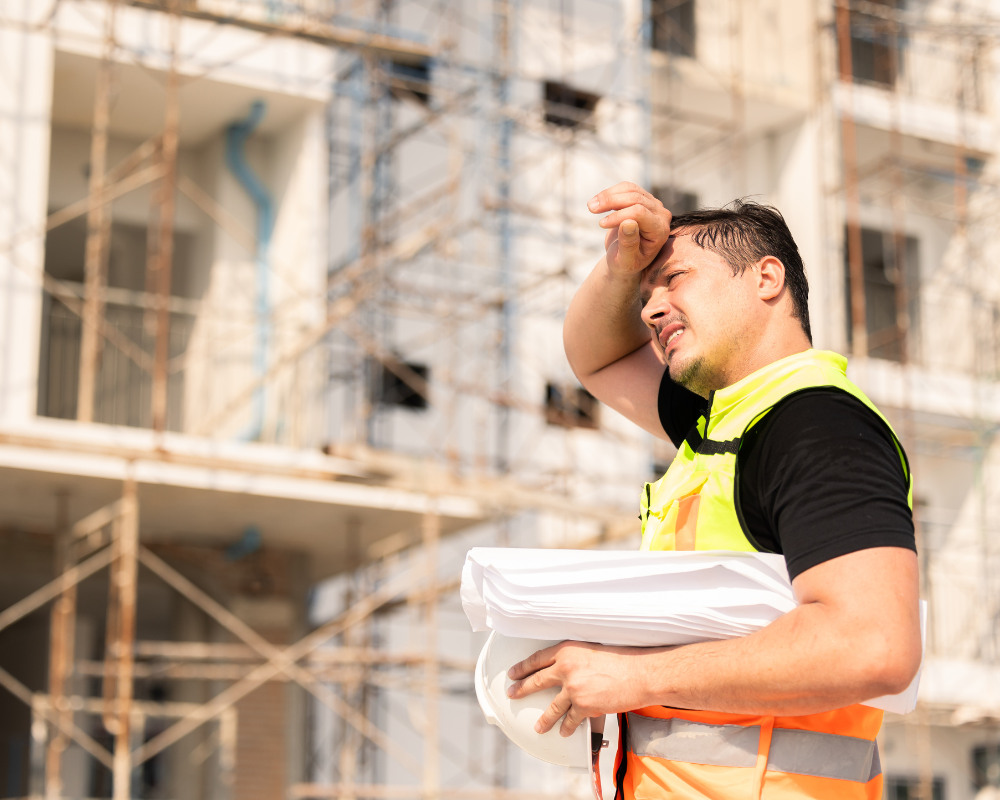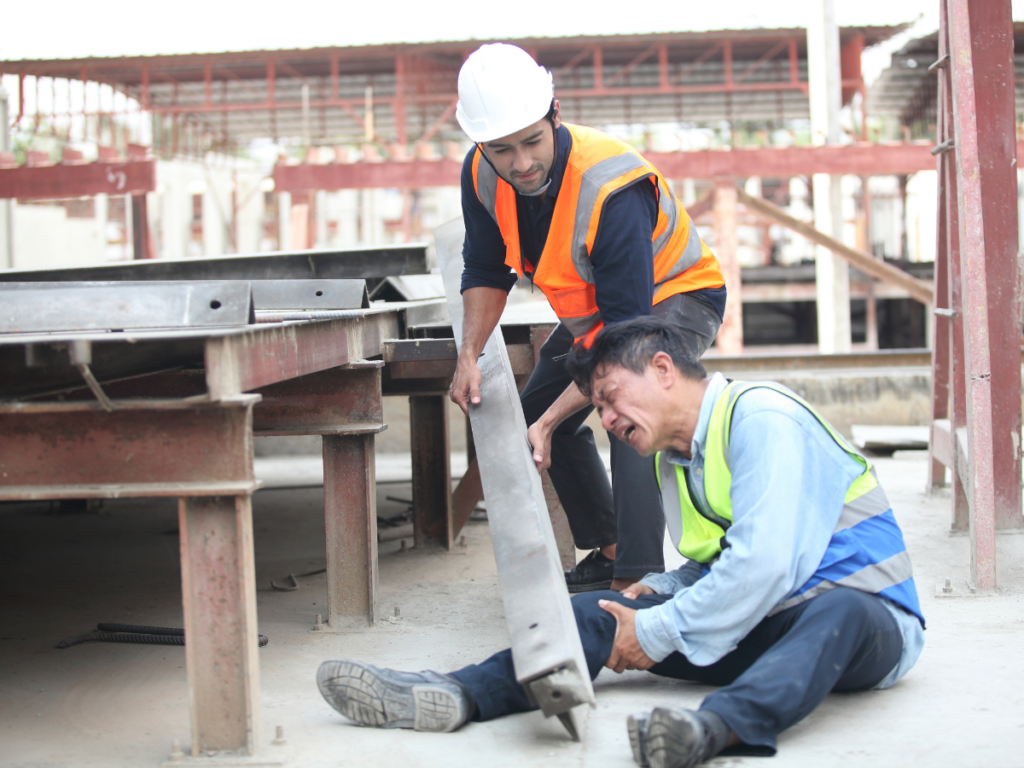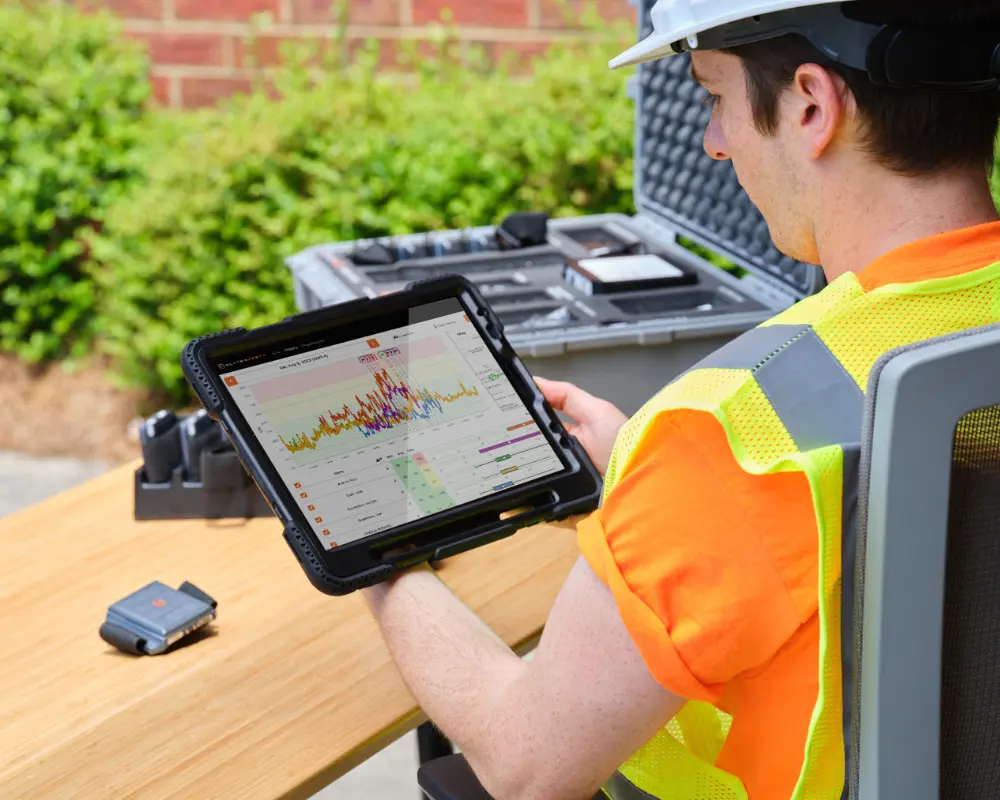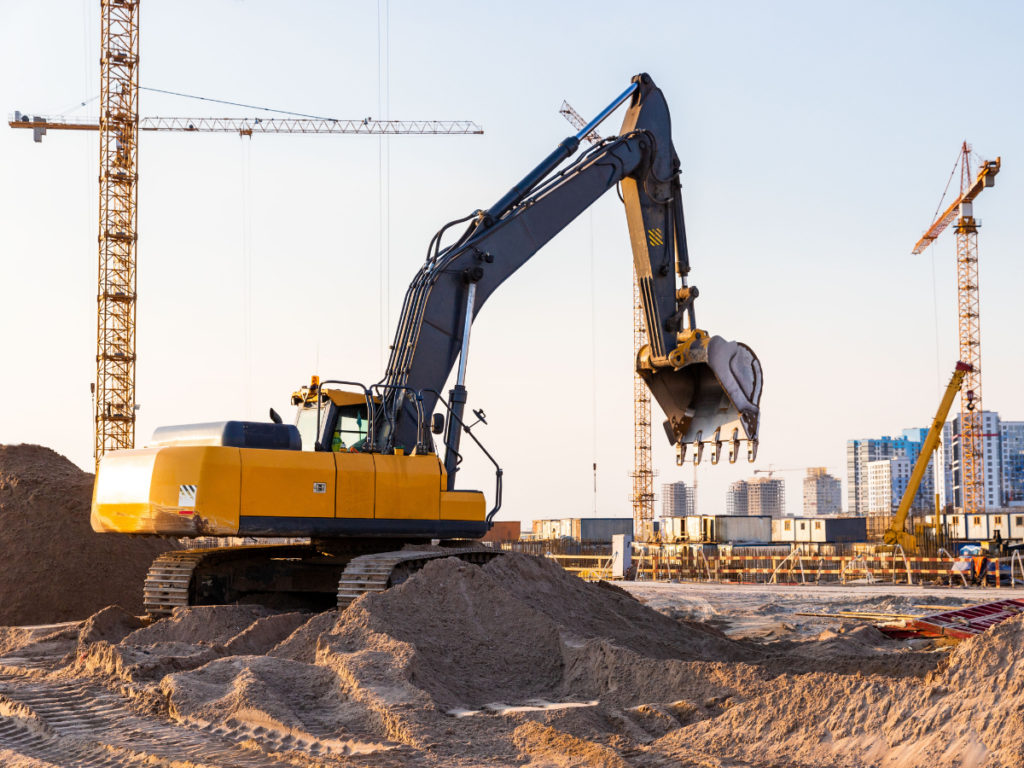The construction industry is full of risk. Some hazards are easy to spot, while others hide in plain sight. Nearly half of all fatal falls, slips, and trips occurred on construction sites, despite better gear, more training, and stricter rules. The truth is, the most common dangers haven’t disappeared. They’ve just become harder to catch in time. This article explores why construction is still one of the most dangerous jobs in America and how real-time tools that track worker health and jobsite conditions are helping teams spot problems before they lead to injuries.

Five Safety Problems That Still Haven’t Been Solved
Construction crews work in some of the harshest, most unpredictable environments. Everyone from general laborers to supervisors faces hazards that can shift by the hour. The pressure to hit deadlines adds even more stress, especially when staffing is short or temperatures are high. Add long hours and multiple subcontractors, and you have a fast-moving job site full of serious risks.
1. Falls from Heights
Falls remain the number-one cause of death in construction, making up 35% of all fatalities. Roofs are the most common location. What’s more, the most-cited OSHA violation in the industry is still the failure to provide fall protection under OSHA 1926.501. Even when gear is available, workers may skip it or use it incorrectly. Split-second decisions that can be fatal.
2. Heat Stress and Overexertion
Hot weather, heavy PPE, and hard labor don’t mix well. Heat stress has become more common as temperatures rise across the country. The early signs, like dizziness, high heart rate, and fatigue, are easy to miss and are often brushed off. Even with traditional methods of monitoring heat, without a way to measure what’s happening inside the body, it’s tough for supervisors to know who’s just tired and who’s actually in danger.
3. Confined Spaces and Air Quality
Crawl spaces, tanks, and pits are dangerous not because of what you see, but what you can’t. Low oxygen levels and toxic gases can turn deadly fast. That’s why OSHA 1926.1203 calls for air monitoring, entry permits, and trained rescue teams. Still, these areas are often treated like any other space until an emergency proves otherwise.
4. Fatigue, Stress, and Mental Health
Construction workers face intense physical demands, long hours, and high-pressure environments, all of which can take a serious toll on mental health. Fatigue from long shifts only increases the risk of mistakes. But the stigma around speaking up or asking for help is strong. Many workers still believe they’re supposed to “tough it out.”

5. Struck-By Incidents and Visibility Gaps
Crowded job sites and heavy equipment don’t mix. One wrong step near a moving loader or blind spot can cause serious harm. Visual cues, like vests or hand signals, aren’t always enough in noisy or low-light conditions. Spotters and barriers help, but near-misses happen daily.
These risks aren’t new. What’s changed is the way we can manage them.
Smarter, Faster Safety Strategies
Many construction sites still rely on visual checks, paper logs, and personal judgment to manage safety, but that approach leaves too many gaps. It depends on supervisors catching subtle signs and workers speaking up at the right moment, which doesn’t always happen. To stay ahead of risk, crews need smarter, more modern tools that make the invisible visible.

Physiological Monitoring and Real-Time Alerts
Physiological monitoring, provided by wearable technology, gives teams something they’ve never had before: live visibility into how each worker is handling the demands of the job. It shows who’s at risk in that exact moment, no matter how experienced or physically fit they may seem.
When alerts trigger in real time, workers are more likely to act. Supervisors can see that a team member is overheating and immediately pull them off task or into the shade. That split-second awareness is what saves lives, especially on hot days when stress builds quickly.
Crews also benefit after the fact. Historical data can highlight patterns like one worker consistently pushing past safe limits, or certain tasks causing higher strain. That knowledge helps guide retraining, task reassignment, or updated safety planning without relying on assumptions.
Predictive Safety Analytics
Analytics give safety teams a way to look forward, not just backward. It’s one thing to respond after someone faints or files a report. It’s another to spot a spike in fatigue hours or days before that happens. When data shows a pattern, like elevated exertion every Friday on the third-floor framing crew, leadership can adjust the schedule or add staff to that rotation.
Small changes like this reduce injury risk and build trust on the ground. Some companies are even using analytics to improve project planning. If certain activities are known to trigger alerts during past builds, those lessons carry into new ones. It turns experience into action.
Environmental Monitoring
Conditions on site don’t stay the same throughout the day. A rooftop can go from 85 to 110 degrees by noon. An enclosed stairwell can trap heat or gas with no warning. Without environmental sensors, that change is invisible until it’s too late. Now, real-time monitoring tools are giving teams accurate readings throughout the site.
These readings help crews schedule high-risk tasks earlier in the day or rotate workers through cooler zones. Some tools also combine environmental and physiological data for a clearer safety picture. In tight spaces or remote sites where airflow is limited, these sensors are critical. They act like a second set of eyes, flagging danger before it becomes an emergency.
Connected Safety Platforms
Trying to manage site safety through text messages, clipboards, and memory doesn’t cut it anymore. Too many signals get lost. Connected platforms give supervisors and safety managers a central view of what’s happening across the whole crew and in real time.
With mobile dashboards, they can track alerts, log safety observations, and follow up on check-ins without needing to walk the entire site. That’s especially useful when managing multiple subs or fast-moving crews. Some platforms even sync with compliance tools, helping teams pull reports or inspection history without digging through files. This reduces admin time and increases accuracy during audits.
These tools are already working on jobsites across the country. But putting them to use and getting the full value starts with knowing where to focus.
What Safety Leaders Can Do Right Now
The job doesn’t need more rules. It needs tools that work in real time. That starts with choosing tech that offers visibility into worker health, site conditions, and trends across projects. When you can see risks as they build, not just after they happen, you make better decisions faster. You reduce injury, lower costs, and protect your team.
The smartest safety strategies don’t replace what’s working. They connect the dots between what’s seen and what’s actually going on. Safety isn’t a slogan. It’s a system. One that lives in data, grows with your crew, and runs 24/7, not just during morning meetings.
In construction, where every minute on site carries weight, real-time awareness may be the most important tool you carry.

